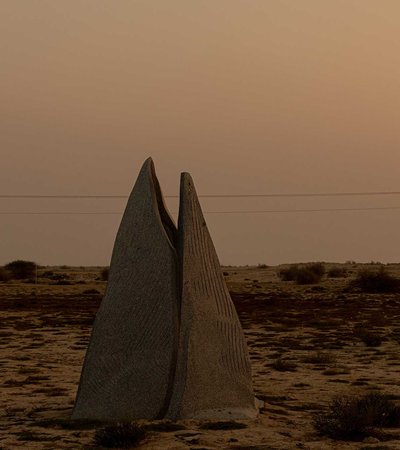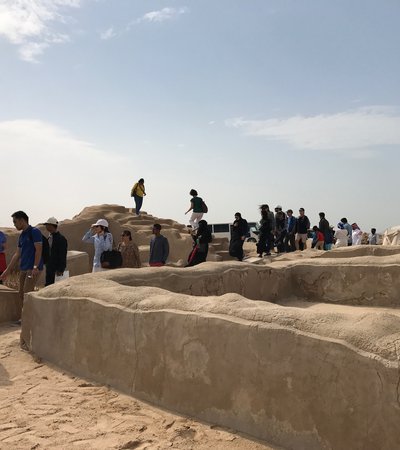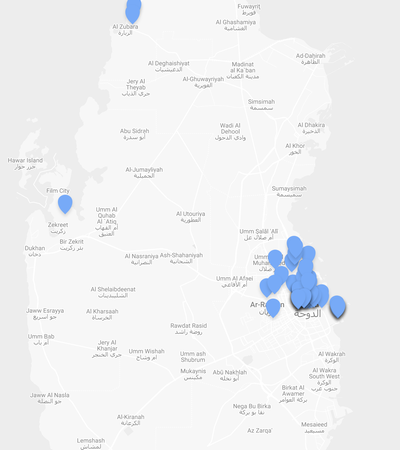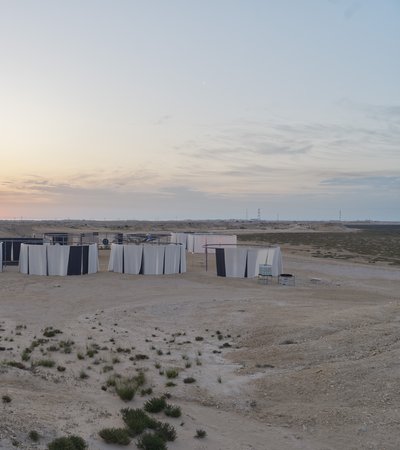Ernesto Neto (b.1964) is a Brazilian artist who has produced an influential body of work, exploring constructions of social space and the natural world, by inviting physical interaction and enabling sensory experiences. Drawing from Biomorphism and Minimalist sculpture, along with Neo-concretism, Tropicalism and other Brazilian vanguard movements of the 1960s and ‘70s, the artist both references and incorporates gravity, organic shapes, materials and spices that engage all five senses.
SlugTurtle TemplEarth is, in the artist’s words, “an animal sculpture ritual room” in the Zubarah Desert. As with most of Neto’s art, the work consists of several components suspended in a delicate balance. A vast surface of white crocheted netting embraces a central octagonal structure made from football goal frames embedded in the ground. The installation centres on a ceramic globe, made in collaboration with renowned Brazilian ceramic atelier Oficina Brennand, around which a ring of cushions extends into each goal.
Again, in Neto’s words, SlugTurtle TemplEarth “invites people to inhabit its body — to sit on its cushions, to sing, dance and breathe in the energy and beauty of our planet. The work creates a space to meditate about our participation in a socio-ecological network shared by humans, birds, bugs, plants and all other forms of life.”





